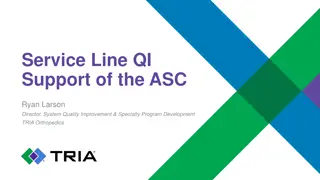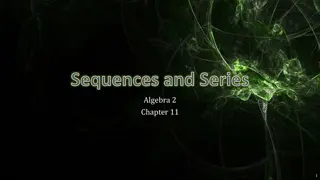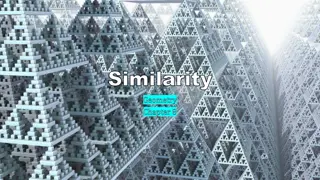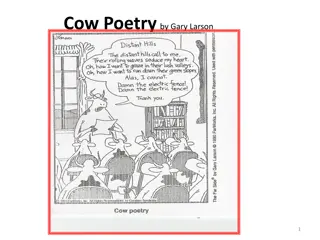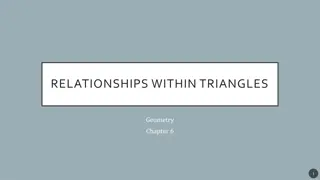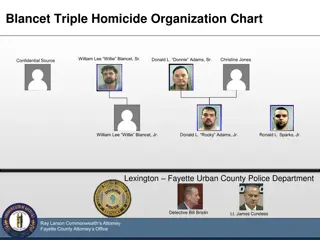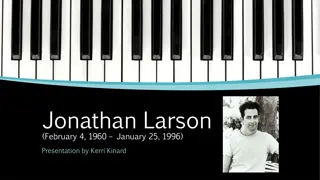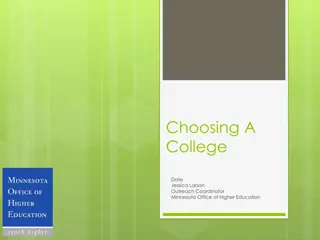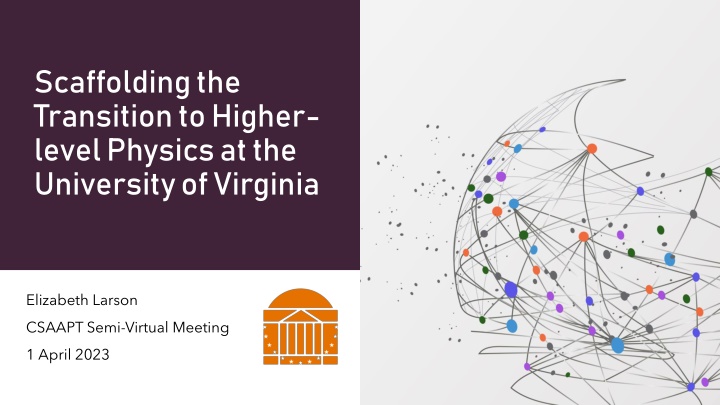
Transitioning to Higher-Level Physics at University of Virginia
Explore the evolution of the introductory physics curriculum at UVA, focusing on PHYS 2720. Discover the motivation behind the course, its current implementation, early results, lessons learned, future goals, and more. Dive into the changes in the curriculum from 2015 to present, including adjustments in course structure, prerequisites, and teaching methods. Uncover how the course, PHYS 2720: Problem Solving and Special Topics in Classical Physics, helps students bridge the gap to higher-level physics courses through active learning, group problem-solving, and mathematical application.
Download Presentation

Please find below an Image/Link to download the presentation.
The content on the website is provided AS IS for your information and personal use only. It may not be sold, licensed, or shared on other websites without obtaining consent from the author. If you encounter any issues during the download, it is possible that the publisher has removed the file from their server.
You are allowed to download the files provided on this website for personal or commercial use, subject to the condition that they are used lawfully. All files are the property of their respective owners.
The content on the website is provided AS IS for your information and personal use only. It may not be sold, licensed, or shared on other websites without obtaining consent from the author.
E N D
Presentation Transcript
Scaffolding the Transition to Higher- level Physics at the University of Virginia Elizabeth Larson CSAAPT Semi-Virtual Meeting 1 April 2023
Overview Evolution of the intro physics curriculum at UVa PHYS 2720: Problem Solving and Special Topics in Classical Physics Motivation behind the course Current implementation Early results and lessons learned Future goals and outlook
Evolution of Intro Physics Curriculum 2015-2021 Physics starts in fall of 1styear 2 semesters of intro lecture, 5 credits each Aligns more closely with engineering track Math now more accessible Calc I pre-requisite for fall fall of 1styear 2022-Present Avoids conflict with UVa s 1st year gen ed curriculum Physics starts in spring of 1styear 2 semesters of intro lecture + labs, 3 + 1 credits each Calc I pre-requisite for spring spring of 1styear
Evolution of Intro Physics Curriculum Lecture credit hours reduced by 40% Later start more urgency to prepare students for research PHYS 2720: Problem Solving and Special Topics in Classical Physics Higher-level curriculum largely unchanged Solution: new course to fill in the gaps and help students transition to higher-level physics courses
PHYS 2720: Problem Solving and Special Topics in Classical Physics 2-credit course Taken in spring of 2ndyear Time- and position- dependent forces Thermo- dynamics Spring of 1styear for students with AP credit Oscillations After 2-semester intro sequence Meets 2x weekly for 75 minutes Extended objects Optics Active learning and group problem-solving Extensive reliance on calc I-III, basic ODEs
PHYS 2720: Problem Solving and Special Topics in Classical Physics Weekly Assignments: Pre-class reading Pre-workshop exercises (45% of grade) Group written homework (50% of grade) Self- and peer-evaluations (5% of grade) Points of Emphasis: Group work signed contracts of expectations for team members Applying math to physics more reliance on calculus than in intro sequence Graphing establish good habits of labeling axes, scaling appropriately, etc. Long, multi-step problems more closely aligned with 3000+ level courses Connecting physics topics e.g., resonance in mechanical oscillators and LRC circuits
Early Results Pre-class diagnostic provided insights into students strengths and weaknesses Diagnostic Average Diagnostic Average Score by Problem Score by Problem 12.00 Students fluency with graphing was poor initially, but rapidly improving 1-8: Mech. 10.00 9-13: E&M 8.00 Group dynamics are very good 14: Thermo 6.00 Students need more repetition/practice than we realize on key topics/techniques 15: Optics 4.00 2.00 0.00 1 2 3 4 5 6 7 8 9 10 11 12 13 14 15
Future Goals and Outlook Preserve focus on skill development rather than assessment Lingering Issue: too much work for 2 credits? Introduce students to numerical methods Expand course offering to summer session Will make scheduling easier for transfer students Could also be taken by Physics Bridge students in graduate program

